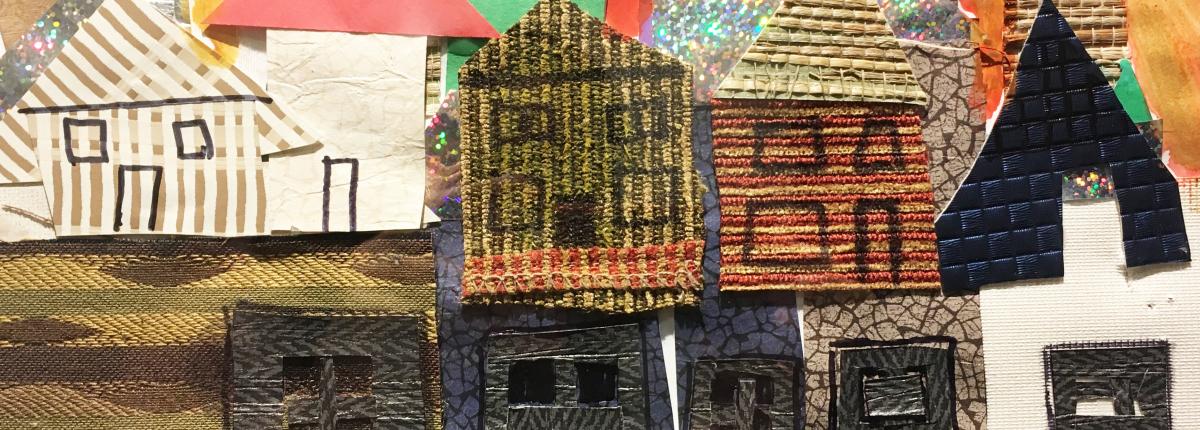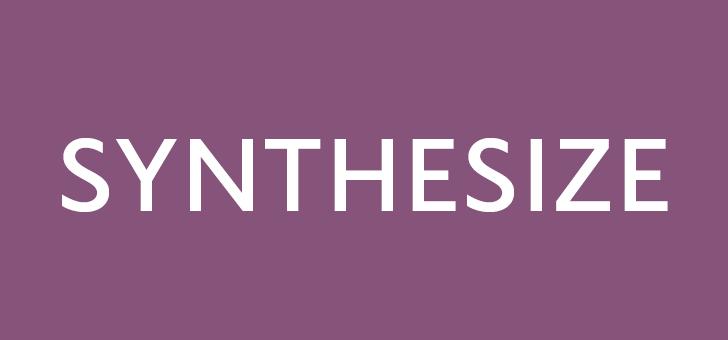Prism.K12 Strategies
Arts Integration at The Phillips Collection

What is The Phillips’s approach to arts integration?
- Student-centered and inquiry-based approach to teaching and learning
- Students express themselves and their values, opinions, and thoughts
- Caters to multiple learning styles and students of diverse backgrounds and cultures
How can teachers use Prism.K12?
- Use the guiding principles, questions, and activities to develop scaffolded arts integration lessons
- Understand your position (your perspectives, power, and identities) and how that affects what you do in the classroom
- Incorporate Phillips-created arts integration activities and lesson plans in your curriculum

IDENTIFY: Look closely and describe what you see.
Ask these suggested guiding questions to use the strategy IDENTIFY:
- Describe the artwork.
- What do you notice?
- What is familiar? What is unfamiliar?
30 Second Look:
- Look at the painting for 30 seconds.
- Have everyone close their eyes. Ask them to say five to ten things they remember.
- Ask them to open their eyes and find five things they didn’t notice the first time they looked.
Fact vs Fiction:
- Have students move around through True or False questions. Develop a series of true/false or multiple choice questions about an artwork that students have to move into position to answer.
- People who think the answer is true stand on one side, people who think the answer is false stand on the other side.
- As a group, look back at the artwork and discuss why they think their answer is more accurate.
First Look:
- Ask students where their eye goes first.
- After discussing that, ask: where does it go next?
- Then, where does it go?
- This is a good way to have a conversation about what the artist has done with lines, gestures, and movement to move the eye around a composition.
Focus In:
- Look at a painting and ask students what they see.
- Then, assign students one part of the painting on which to focus. They can look as a small group or each student can work independently on his/her/their assigned section. Have them focus on their section to find five things they did not notice the first time they looked at the entire artwork.
Nouns and Adjectives:
- Ask the class for 10 nouns and 10 adjectives to describe a work of art they see.
- Create a post-it note for each word. Group like words together; see where there are commonalities and differences.

CONNECT: Link what you see to other objects, ideas, and perspectives.
Ask these suggested guiding questions to use the strategy CONNECT:
- What ties the artworks together?
- What ties the artwork to you?
- What ties the artwork to the world around you?
- What ties the artwork to the past?
- How does the artwork connect to primary sources of the time (e.g., literature, music, and art)?
Asking Questions
- After discussing a work of art with your class, distribute notecards. Have each student write down a question he/she has about the artwork.
- Have students pass the notecard to another student, who then answers it. If they don’t have an answer, have them write another question.
- Have students pass the notecards again, where the next student can either answer one of the questions or write an answer.
- Repeat as many times as you would like.
- Lastly, take turns reading the questions and answers on the cards.
Before and After
- Have the class talk about what is happening now in an artwork.
- Then ask them what they think happened just before? What do they think will happen next? You can discuss with the group or have them draw the before, during (use the artwork for this one), and after in cartoon-like boxes.
Categories
- Select 12 artworks.
- Ask students to work in pairs and establish a main idea or theme for 4 sets of 3 works of art. Examples: works with people in them, works that are sculptures, works that include water, works that use a lot of blue, etc.
Personal Connections: 3 Y’s
- Using an artwork, you may prepare students by asking them what they think the image is about and why and then focusing their attention on the theme to be explored through the 3Ys. Students may need initial clarity about the theme or topic to be explored. Then ask:
- Why might this [topic, question] matter to me?
- Why might it matter to people around me [family, friends, city, nation]?
- Why might it matter to the world?
Think, Pair, Share
- Using one work of art, create a set of 16 informational cards about the artist, time period, or inspiration.
- Distribute the cards; one to each student. You can also lay all the cards on a surface and have students pick a card that interests them.
- Participants read their card and make a hypothesis on how it connects with a work of art. Participants share their card and hypothesize with one person.
- Next, these participants share with another pair, and so on… until a group of 8 is made.
- Each group of 8 presents what cards and connections they made. Facilitator interjects additional comments and connections.

EXPRESS: Use artworks to:
- Analyze artists' thoughts, ideas, and emotions
- Consider the context in which the art was made
- Understand the artists' perspectives
Ask these suggested guiding questions to use the strategy EXPRESS:
- Why might the artwork have been created? Why did the artist make the work look the way it does?
- Who created the artwork? How is their identity reflected or not reflected in the artwork?
- What do you think the artist is expressing in their artwork? How would you express these ideas?
Beginning, Middle, & End
- Choose one of these questions, and use your imagination in your response:
- If this artwork is the beginning of a story, what might happen next?
- If this artwork is the middle of a story, what might have happened before? What might be about to happen?
- If this artwork is the end of a story, what might the story be?
Character, Setting, Plot, and Mood
- How is it different to read a story in a book versus looking at a story in a painting? How is it similar? This question can transition into a discussion about character, setting, plot, and mood in a specific story and a specific painting.
Haikus
- Write a Haiku describing a work of art.
- Write a Haiku about how a person in a work of art is feeling.
- Pick a person or object in an artwork. Write a Haiku from the perspective of that person or object.
Personal Choices
- Show students a selection of artworks (or pick a gallery in the museum). Ask a series of questions and have them select the artwork they think best answers the question. After each question, have students explain their choices. Questions may include:
- Which work of art is the most powerful?
- Which work of art fits in with the other artworks the least? Which work of art are you most curious about?
- Which work of art do you like the best?
- Which do you like the least?

EMPATHIZE: Use artworks to:
- Better understand people and cultures
- Talk about personal feelings
- Practice empathy
Ask these suggested guiding questions to use the strategy EMPATHIZE:
- Imagine stepping inside this artwork:
- How do you think the person is feeling?
- What mood is the artist conveying?
- Why has the artist depicted the artwork in this way?
- How is your response to the artwork similar to or different from someone else’s response?
Blind Contour Drawings
Draw a portrait of your partner, following these rules:
- You cannot look at your paper.
- You must only look at your partner.
- Never pick up your pen or pencil.
Reflect:
- What did you learn about your partner from drawing them?
- How did you empathize with your partner (both as the artist and the subject)?
- How did the imperfections of the line drawing enhance the image
Drawing in Pairs
- Group students in pairs, and have them sit back to back (this can also be done virtually by having the students not show each other their images).
- Give one student an artwork reproduction and one student drawing materials. Direct the student holding the reproduction to describe the artwork, while the other student tries to draw the artwork based on the student’s descriptions.
- Have students switch roles. Reflect on the experience.
Moving Around
- Have the group look closely at a work of art and talk about what they see.
- Then have each person switch places with another person in the class. Ask what they notice from their new position that they didn’t see before.
- Now, move up close. What do they see?
- Now, move far away. What do they see?
- How does changing positions change their perspective in looking at the work of art?
Speech Bubbles
Pick a work of art with people in it. Use speech bubbles to have students write what people in works of art might be thinking, saying, or feeling.
Challenge! Look at an abstract piece. Imagine what the shapes might say to each other.
Step Inside/5 Senses
Imagine you are inside a work of art. Ask students what they would see, hear, smell, touch/feel, and taste.

SYNTHESIZE: Develop a new idea, reach a new understanding, or create something new.
Ask these suggested guiding questions to use the strategy SYNTHESIZE:
- How has what the students learned allowed them to reach a new understanding about the artwork?
- How will they translate their new knowledge and perspectives to create something that resonates with their culture, life experience, and what they learn in school?
7 Word Story
- Write a story about an artwork using only 7 words.
Newspaper Caption
- Write a newspaper headline for the artwork that captures the most important elements of the artwork.
- Consider what you would want people to remember about the artwork.
- You may want to consider thinking about how you could convey the artwork to a person who wasn’t looking at it.
- Pay close attention to your descriptive words and details.
New Title
- Have students write a new title for a work of art.
- You could make it a game by showing them 3-5 works of art. Each student selects an artwork and doesn’t tell anyone which one they have chosen. Then they share their title and the rest of the class can try to decide which work of art it refers to.
Word Power
- Ask students to say or write on a notecard adjectives to describe a work of art.
- Discuss why they picked their words, having them provide evidence in the artwork.
- Synthesize their words to determine one word that best describes the work of art.